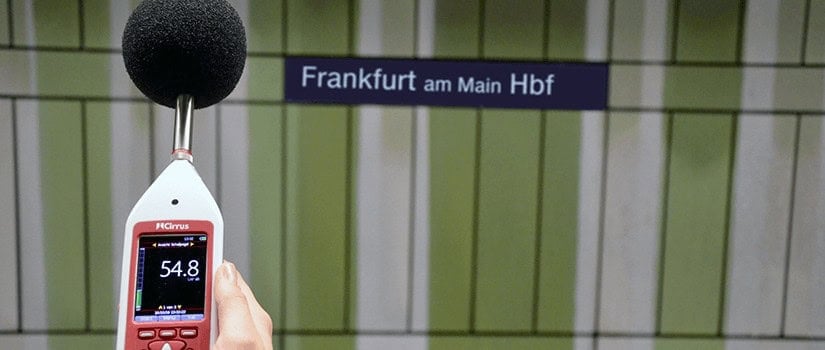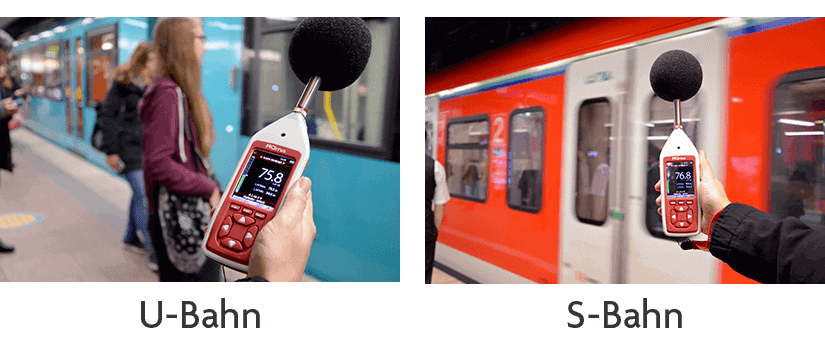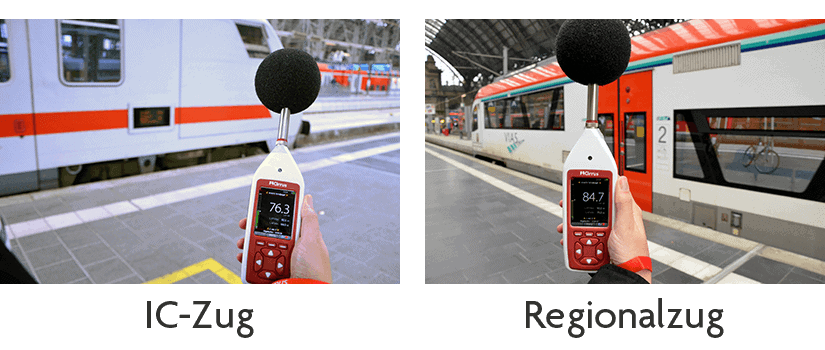More than 30 million people use public transport to get from A to B every day. Opened in 1888, Frankfurt am Main Central Station is the most important transport hub for rail traffic in Germany due to its location. With around 1,500 arriving and departing trains and 450,000 passengers daily, it is one of the largest train stations in Germany, along with Munich and Berlin. Consisting of an above-ground terminus station with 24 tracks for long-distance and local trains, an underground station with 4 tracks each for suburban and underground trains, and a distribution level with a shopping arcade, it is the ideal location for Cirrus Research to measure the noise levels of the various trains and trams using our Optimus sound level meter.

Sound level measurement in Frankfurt station. Measurement of noise levels of the underground, suburban railway, intercity train and a regional train.
Sound level measurement underground versus suburban railway
The measurements in local transport are very close. While the underground reached 75.8 dB, the suburban railway reached 76.8 dB.

Noise level measurement at Frankfurt Central Station. Comparison of measurements between underground and suburban railway.
Noise level measurement between intercity train and regional train
Two departing trains were measured in the terminus station. The IC competes with the underground with its 76.3 dB, whereas the engines of the regional train reach an impressive 84.7 dB.

Sound level measurement at Frankfurt Central Station. Comparison between an IC train and a regional train.
Sound level measurement results for the train and railway at Frankfurt Central Station
The measured values are all between 75 and 85 decibels, which can be compared to loud street noise or children screaming. For mobile transport, you accept this noise level as long as you don’t live right next to the station.



